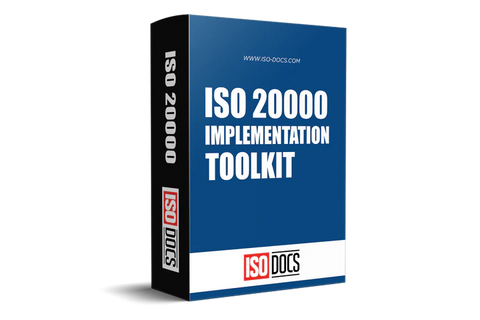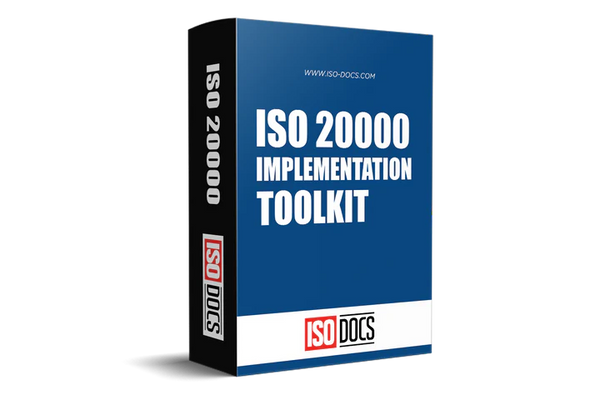ISO 20000 Continual Service Improvement Process Template
Overview of ITIL Continual Service Improvement
The core idea behind continual service improvement (CSI) is that organizations must constantly look for ways to improve the quality of their services. This includes identifying and implementing changes that will reduce costs, increase efficiency, and improve customer satisfaction.

CSI is an iterative process that begins with planning and ends with review. During the planning phase, organizations identify what they hope to achieve with CSI and set measurable goals. They also identify the tools and processes that will be used to track progress.
The implementation phase is where the actual improvements are made. This may involve changes to organizational structure, processes, or technology.
Finally, during the review phase, organizations assess the results of their efforts and determine whether the goals were met. If not, they adjust and begin the cycle again.
CSI includes the following activities:
- Service Reporting: Collecting data and generating reports on service performance. This information is used to identify trends and areas for improvement.
- Service Benchmarking: Comparing the performance of your organization's services against other organizations. This helps to identify best practices and areas for improvement.
- Service Metrics: Collecting data on various aspects of service performance, such as uptime, response times, and mean time to repair. This information is used to identify trends and areas for improvement.
- Process Mapping: Creating diagrams that visualize the steps involved in a process. This helps to identify bottlenecks and areas for improvement.
- Process Improvements: Implementing new ways to improve the efficiency and effectiveness of processes. This may involve automating.
Significance of Continual Service Improvement :
- Continual Service Improvement is a critical component of the ISO 20000 standard and is essential for ensuring that an organization's IT Service Management processes are effective and continuously improving.
- Continual Service Improvement helps organizations to identify and implement improvements to their IT Service Management processes to better meet the needs of their customers and other stakeholders.
- Continual Service Improvement helps organisations to improve the efficiency and effectiveness of their IT Service Management processes and to make better use of resources.
- Continual Service Improvement helps organizations identify and resolve problems with their IT Service Management processes and prevent future problems.
- Continual Service Improvement helps organizations to communicate effectively about their IT Service Management processes and to share best practices with other organizations.
Objectives of Continual Service Improvement (CSI) for an organization in ISO 20000
- To provide a framework for the continual organizational improvement of services.
- To ensure that service levels are continually improved.
- To promote customer satisfaction by continuously improving services.
- To reduce cost and waste by improving services.
- To improve service quality by incorporating customer and other stakeholders' feedback.
What is the Importance of the Continuous improvement process ISO 20000?
Continuous improvement is an essential part of the ISO 20000 standard. It helps organizations to identify and implement changes that will improve their IT service management system (ITSMS).
There are many benefits to implementing a continuous improvement process, including the following:
• Improved service quality
• reduced costs
• improved customer satisfaction
• improved employee morale
• improved efficiency
A continuous improvement process should be tailored to an organization’s specific needs. It should be based on a systematic and structured approach and involve all employees in the organization.
The process of Continuous improvement of 7 steps in ISO 20000 :

The seven steps of continuous improvement are as follows:
1. Define what you want to achieve
2. Set yourself measurable targets
3. Analyze your current performance
4. Identify areas for improvement
5. Develop and implement improvement plans
6. Evaluate your results
7. Monitor the improvement
1. Define what you want to achieve: -
The first step in continuous improvement is to define what you want to achieve. This could be anything from improving customer satisfaction levels to reducing costs. Once you have decided what it is you want to achieve, you can move on to set yourself measurable targets.
2. Set yourself measurable targets: -
You need to set measurable targets to track your progress and ensure you are making improvements. These targets could range from reducing complaints by a certain percentage to increasing sales by a certain amount. Without measurable targets, it won’t be easy to know if your improvement efforts are paying off.
3. Analyze your current performance: -
Before you can start improving, you must first analyze your recent performance. This will help you identify areas where you are already doing well and where there is room for improvement. Once you understand your current version well, you can start looking for ways to improve.
4. Identify areas for improvement: -
After reviewing your current performance, you should know where to focus your improvement efforts. Once you have identified areas for improvement, you can start brainstorming possible solutions.
5. Implement your solutions: -
Once you have identified potential solutions to your performance issues, it’s time to implement them. You will need to develop an implementation plan and ensure all stakeholders are on board with the changes.
6. Evaluate your results: -
After you have implemented your solutions, you must evaluate the results. This will help you determine if your keys are improving performance or if you need to go back to the drawing board.
7. Monitor the improvement
It allows organisations to track their progress toward meeting ISO 20000 requirements and identify areas where improvements can be made.
CSI and the Deming cycle :
The CSI approach is defined in ISO/IEC 20000 as a systematic and planned set of activities to continually identify, select, and implement improvements to the IT Service Management System to improve service quality and overall performance.
Process improvement is often linked with the Deming cycle, or plan–do–check–act (PDCA). This is a four-stage cycle initially developed by W. Edwards Deming for use in industry, but it can be applied to any process. The stages of the Deming cycle are:
- Plan: Identify the goals of the process and how they will be achieved.
- Do: Carry out the process according to the plan.
- Check: Review the process results to see if they met the goals.
- Act: Improve the process based on the check results.
The Deming cycle is often used with continuous improvement (CI). CI is an ongoing effort to improve the quality of a process or product. Therefore, it can be seen as a never-ending Deming cycle to move closer to perfection continuously.



